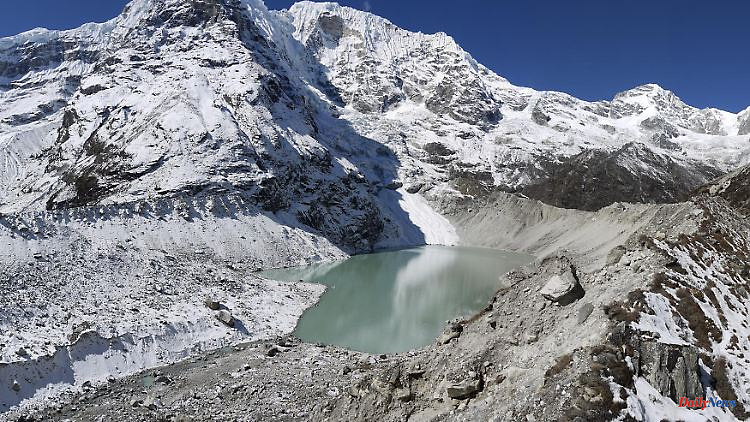Global warming is causing more and larger glacial lakes in the mountains. An enormous threat for residents of valleys: According to a study, 15 million people worldwide are threatened by flooding caused by runoff meltwater.
According to study data, possible eruptions of glacial lakes threaten around 15 million people worldwide. A research team reports in the journal "Nature Communications" that the population in the Asian high mountains in India, Pakistan, China and in the Andean countries of Peru and Bolivia are most affected by the risk of such floods. More than half of the world's population at risk can be found in just four countries: India, Pakistan, Peru and China.
If glaciers melt as a result of global warming, the meltwater that runs off can collect in new lakes or immensely enlarge existing ones. If a natural dam fails on such a body of water, flooding can occur down the valley without any warning. According to the scientists, such outbreaks have already led to many deaths and damage to infrastructure and agricultural land in the past. In the Cordillera Blanca alone in the northern Andes of Peru, several thousand people have been killed by floods from glacial lakes in the last 70 years.
Down the valley from Lake Palcacocha in the northern Andes, for example, lies the town of Huaraz, which is also popular with trekking tourists. It was flooded in 1941 after a mound broke. In the event of a new accident, this time caused by climate change, the consequences would be even more devastating, researchers warned in the journal "Nature Geoscience" as early as 2021.
In 1941 a natural wall of the 4500 meter high glacial lake broke, an avalanche of water and mud shot down the valley and destroyed a third of the city. At least 1800 people lost their lives. Since then, the lake has grown drastically, as the researchers reported in 2021 after evaluating aerial photos. Their modeling showed that the probability of glacier retreat is more than 99 percent due to man-made climate change and cannot be explained by natural climate fluctuations. The team assessed the risk of a flood disaster as "very high". Protective measures are urgently needed.
The risk of many deaths is increasing worldwide, warns the research team of the current study. Since 1990, the number, area and volume of glacial lakes have increased worldwide, and the population in the areas down the valley has grown rapidly. In Huaraz, for example, there are now over 100,000 more people than in 1941. There is a lack of resources for damage limitation - corruption is deeply rooted in the country and the standard of living is low.
The team led by Tom Robinson from the University of Canterbury in Christchurch (New Zealand) and Caroline Taylor from Newcastle University in Newcastle upon Tyne (UK) combined data on lake status, vulnerability and vulnerability to estimate the current potential for damage on a global scale determine. The areas most at risk are therefore not necessarily those with the largest, most numerous or fastest-growing glacial lakes, but rather those with a particularly large number of people living down the valley and poorly developed disaster management.
According to the evaluation, a total of 90 million people live in 30 countries in 1089 catchment areas with glacial lakes. Around 15 million of them (16.6 percent) lived within a 50-kilometer radius of a glacial lake and no more than one kilometer from potential outflow channels. The differences from country to country are enormous: in India there are around three million, in Pakistan around two million potentially endangered people - in Iceland only around 260. Greenland also has the highest number of glacial lakes, but almost no people live along them likely spillways.
According to the researchers, a hotspot that has been studied far too little so far is the Andes. The risk of outbreaks there and their potential consequences urgently need to be better researched. There is also a lack of evaluations for Pakistan.
According to the research team, it is still unclear how the risk of glacial lake outbursts will develop in the future. As glaciers continue to recede due to climate change, existing glacial lakes will continue to expand and many more new lakes will be created. This is changing the spatial pattern of the risk of eruptions, especially since people are moving to higher and higher altitudes and closer to the glacial lakes with economic sectors such as tourism and agriculture.












